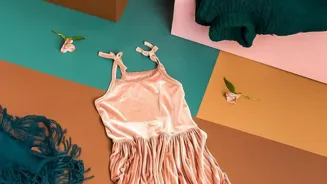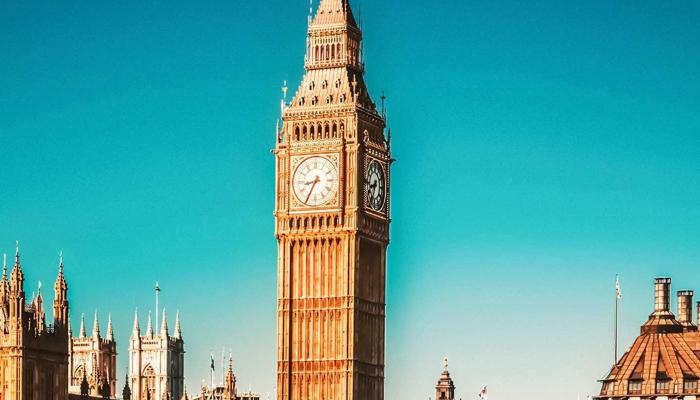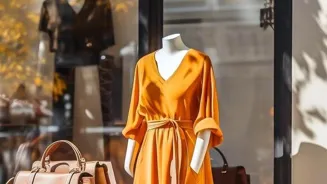Dive into the world of fashion mood boards! Discover how to craft visual inspiration for your style journey. Read more!
In the vibrant world of fashion, where trends come and go faster than a Mumbai local,
staying inspired is key.
Whether you're a budding designer dreaming of showcasing your collection at Lakme Fashion Week, a stylist with the task of creating the perfect look for a client, or simply someone who loves to express themselves through clothes, a fashion mood board can be your best friend.
Think of it as a visual roadmap, a tangible collage of ideas that helps you define your style direction and bring your sartorial visions to life. Forget endless scrolling through Instagram, a mood board keeps your focus sharp and your creativity flowing.
It's a powerful tool that can transform abstract concepts into concrete designs and stunning outfits that truly reflect your personal aesthetic. So, grab your scissors, gather your favourite magazines, and let's dive into the art of creating a killer fashion mood board!
Creating a mood board is essential for capturing the desired aesthetic and theme
A mood board isn't just a random collection of pretty pictures. It's a carefully curated visual representation of the feeling, style, and overall aesthetic you're aiming for. Before you even pick up a pair of scissors, take some time to reflect on what you want to achieve.
Are you envisioning a collection inspired by the Mughal era with its rich silks and intricate embroidery? Or perhaps you're drawn to the minimalist chic of Scandinavian design with its clean lines and neutral colours?
Understanding your theme is crucial as it will guide your selection of images, colours, textures, and even typography. Jot down keywords that describe the mood you're trying to create – words like "ethereal," "bold," "romantic," or "urban.
" These words will act as your compass, ensuring that your mood board stays true to your initial vision. Consider your target audience as well. Who are you designing for? A college-going student? A working professional?
Tailoring your mood board to their preferences will make your designs more relatable and marketable.
Gather visual inspiration from varied sources for mood boards
Now for the fun part – gathering your visual inspiration! This is where you can let your creativity run wild. Look beyond just clothing. Think about everything that contributes to the overall mood – colours, textures, locations, art, and even music.
Browse through fashion magazines like Vogue India, Elle, and Harper's Bazaar India. Don't just focus on the clothes; pay attention to the photography, the styling, and the overall atmosphere of the images. Scour the internet for inspiration.
Pinterest and Instagram are treasure troves of visual content. Create boards dedicated to specific themes and save images that resonate with you. Don't limit yourself to fashion-specific sources. Look to art, architecture, nature, and even everyday objects for inspiration.
A vibrant street market in Jaipur, a beautifully weathered wall in old Delhi, or a piece of contemporary art – all these can spark unique ideas for your mood board. Remember to keep a small notebook handy to jot down ideas as they come to you.
Curate a mood board with visuals to tell a compelling story
Once you've amassed a collection of images, it's time to start curating your mood board. This is where you'll begin to arrange your visuals in a way that tells a story. You can choose to create a physical mood board using a corkboard, foam board, or even a large piece of cardboard.
Alternatively, you can opt for a digital mood board using tools like Pinterest, Canva, or Adobe Photoshop. Start by laying out all your images and experimenting with different arrangements. Group similar images together and look for patterns. Do you see a recurring colour palette?
Are there certain textures that stand out? Think about the flow of your mood board. You want it to be visually appealing and easy to understand. Consider the size and shape of your images. Use a mix of full-page spreads, smaller details, and even fabric swatches to add depth and texture.
Don't be afraid to experiment and rearrange your images until you achieve the desired effect. The key is to create a visual narrative that captures the essence of your theme.
Power of colors and textures in design mood boards
Don't underestimate the power of colours and textures in conveying the mood you want to create. Colours evoke emotions and set the tone for your designs. Include colour swatches or paint chips that represent your colour palette. Are you drawn to warm, earthy tones or cool, muted shades?
Textures add depth and dimension to your mood board. Include fabric swatches, paper samples, or even small objects that represent the textures you want to incorporate into your designs. Think about the tactile feel of your garments. Will they be soft and flowy or structured and tailored?
The combination of colours and textures will play a crucial role in defining the overall aesthetic of your collection.
For example, combining rich jewel tones like ruby red, emerald green, and sapphire blue with luxurious velvet and silk textures can evoke a feeling of opulence and grandeur, perfect for a collection inspired by Indian royalty.
Fashion mood boards are dynamic tools for creative evolution
Your fashion mood board shouldn't be a static entity. It's a living, breathing document that should evolve as your ideas develop. Don't be afraid to revisit and revise your mood board as you gain new insights and inspirations.
Remove images that no longer resonate with you and add new ones that better reflect your evolving vision. Seek feedback from others. Share your mood board with friends, colleagues, or mentors and ask for their opinions.
A fresh perspective can help you identify areas for improvement and refine your vision. Remember that a mood board is a tool to help you clarify your ideas and bring your creative visions to life. So, embrace the process, have fun, and let your imagination run wild!
Whether you aspire to be a famous designer or simply want to elevate your personal style, a well-crafted fashion mood board can be your secret weapon in the world of fashion. Keep it visible in your workspace as a constant source of inspiration and watch your designs flourish.












